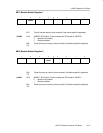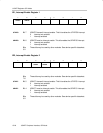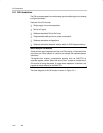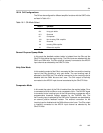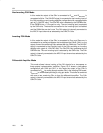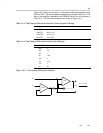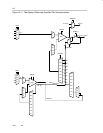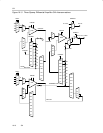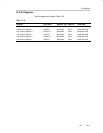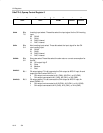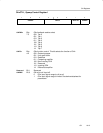
OA
16-6 OA
Non-Inverting PGA Mode
In this mode the output of the OAx is connected to R
TOP
and R
BOTTOM
is
connected to AV
SS
. The OAxTAP signal is connected to the inverting input of
the OAx providing a non-inverting amplifier configuration with a programmable
gain of [1+OAxTAP ratio]. The OAxTAP ratio is selected by the OAFBRx bits.
If the OAFBRx bits = 0, the gain is unity. The non-inverting input is selected
by the OAPx bits. The external connection for the inverting input is disabled
and the OANx bits are don’t care. The OAx output is internally connected to
the ADC12 input channel as selected by the OAxCTL0 bits.
Inverting PGA Mode
In this mode the output of the OAx is connected to R
TOP
and R
BOTTOM
is
connected to an analog multiplexer that multiplexes the OAxI0, OAxI1 or the
output of one of the remaining OAs, selected with the OANx bits. The OAxTAP
signal is connected to the inverting input of the OAx providing an inverting
amplifier with a gain of −OAxTAP ratio. The OAxTAP ratio is selected by the
OAFBRx bits. The non-inverting input is selected by the OAPx bits. The OAx
output is internally connected to the ADC12 input channel as selected by the
OAxCTL0 bits.
Differential Amplifier Mode
This mode allows internal routing of the OA signals for a two-opamp or
three-opamp instrumentation amplifier. Figure 16−2 shows a two-opamp
configuration with OA0 and OA1. In this mode the output of the OAx is
connected to R
TOP
by routing through another OAx in the Inverting PGA mode.
R
BOTTOM
is unconnected providing a unity gain buffer. This buffer is combined
with one or two remaining OAx to form the differential amplifier. The OAx
output is internally connected to the ADC12 input channel as selected by the
OAxCTL0 bits.



